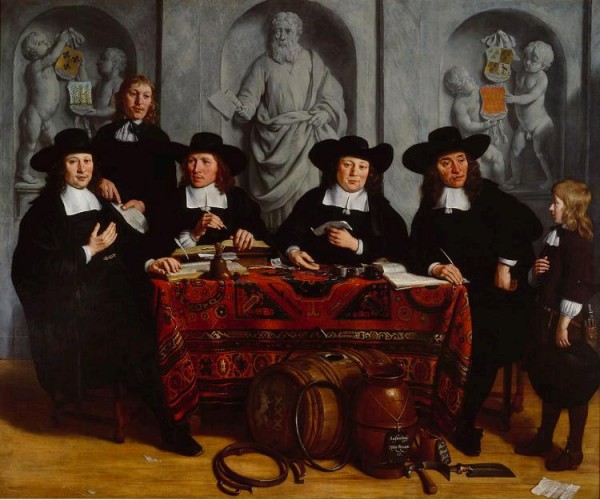Call for proposals, Netherlands Yearbook for History of Art 62: meaning in materials
Materials carry meaning and influence how form, style and representation take shape in works of art. Meaning is created through the choice of a certain material and the characteristics of materials that shape creative processes and direct certain formal and iconographical decisions. This is true not only for precious, rare, or unusual materials addressed in the study of Materialikonographie, but also for the common materials of painting, sculpture, architecture, and the applied arts.
Despite the importance of materials to the history of art, there exists only a small body of research considering their meaning. The reason might lie in the marginalizing stance art theory has adopted towards materials. Theories of artistic creation foreground how ideas and designs originate in the mind of the artist while materials are considered mere passive stuff. Although artists and craftsmen were probably always aware that the hierarchy of mind before matter and design before execution does not do justice to real practice, this model has proven persistent when it comes to theoretical explorations of art making.
Initially, the installment of the superiority of idea or disegno was a manoeuvre to emancipate the visual arts from the realm of craftsmanship. This however came at the cost of hiding material procedures and technical skills from view and consequently, from theoretical reflection. In the effort to turn art history from an applied science into an academic discipline, art historians would repeat this manoeuvre, apparent for example in Alois Riegl’s dismissal of Gottfried Semper’s analysis of materials and techniques in favor of an abstract Kunstwollen, in which materials and making had no predominant influence on form or style.
Today, although art historians know a lot about materials and employ this knowledge in theoretical analysis, art history still has no consistent theory of material practice. Only recently have scholars started to uncover the steady undercurrent of material agency and to turn implicit knowledge of materials and practice into explicit theoretical approaches. Technical art history, for instance, has furthered understanding of studio practice and the procedures of art making; provided insights into both the design process and matters of style; and prompted a rethinking of relations between practice and theory. Likewise, the study of material culture and the history of science and technology, drawing on methods of history, anthropology, and sociology, has generated results and knowledge that are transforming the way art history looks at the role materials play in the interpretation of art works.
For this volume, we seek proposals that join these approaches to examine the meaning in materials in Netherlandish art and craft from the medieval and early modern period up to the nineteenth century.
Possible topics:
- impact of materials on production, use, and decay of art objects
- relation between materials and certain motifs, iconographies, and styles
- worth, spread, status, and imitation of materials
- availability and transport of materials (certain pigments, stones, types of wood) and resulting geographical, cultural, and political uses of materials (e.g. monochrome sculpture, architectural ornaments, facades)
- dissemination of material knowledge and spread of material-related technologies in text and image (e.g. Nova Reperta, manuals, recipes)
- ‘travel’ and change of motifs through different materials (e.g. tapestries, pottery, glass, metalwork)
- representation of one material in another (e.g. precious materials in oil paint) and the imitation of the effect of one material by another (e.g. bronze and clay, oil paint and engraving, pastel, water color)
- the relation between artists and materials (e.g. why artists prefer or reject certain materials, how do they become identified with certain materials and working methods)
- difficult, conflicting materials and failure due to material (e.g. glass, gold, life casting), multimedia, unconventional and counterintuitive use of materials
- metaphorical connotations of materials (e.g. worthy/humble, pure/ mixed, truthful/deceiving, female/male, forgiving/hard, intuitive/intellectual)
- sensual perception of materials
Please send a proposal of max. 500 words and a short CV to all three volume editors:
H. Perry Chapman: pchapman@udel.edu
Ann-Sophie Lehmann: a.s.lehmann@uu.nl
Frits Scholten: f.scholten@rijksmuseum.nl
Deadline: October 1st 2010
Notification: December 2010
Deadline First Draft: June 2011

